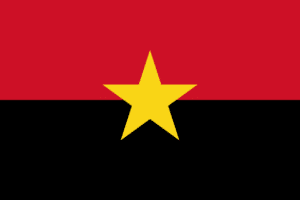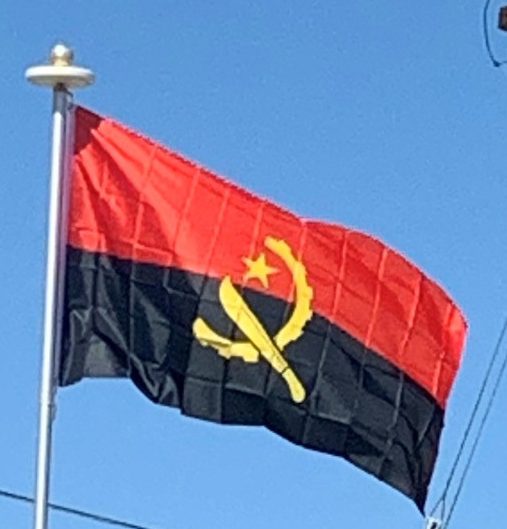Between 1975 and 1991, the MPLA implemented an economic and political system based on the principles of scientific socialism, incorporating central planning and a Marxist–Leninist one-party state. It embarked on an ambitious program of nationalization, and the domestic private sector was essentially abolished. Privately owned enterprises were nationalized and incorporated into a single umbrella of state-owned enterprises known as Unidades Economicas Estatais (UEE). Under the MPLA, Angola experienced a significant degree of modern industrialization. However, corruption and graft also increased and public resources were either allocated inefficiently or simply embezzled by officials for personal enrichment. The ruling party survived an attempted coup d’état by the Maoist-oriented Communist Organisation of Angola (OCA) in 1977, which was suppressed after a series of bloody political purges left thousands of OCA supporters dead.
The MPLA abandoned its former Marxist ideology at its third party congress in 1990, and declared social democracy to be its new platform. Angola subsequently became a member of the International Monetary Fund; restrictions on the market economy were also reduced in an attempt to draw foreign investment. By May 1991 it reached a peace agreement with UNITA, the Bicesse Accords, which scheduled new general elections for September 1992. When the MPLA secured a major electoral victory, UNITA objected to the results of both the presidential and legislative vote count and returned to war. Following the election, the Halloween massacre occurred from 30 October to 1 November, where MPLA forces killed thousands of UNITA supporters.

Ceasefire with UNITA:
On 22 March 2002, Jonas Savimbi was killed in action against government troops. UNITA and the MPLA reached a cease-fire shortly afterwards. UNITA gave up its armed wing and assumed the role of a major opposition party. Although the political situation of the country began to stabilize, regular democratic processes did not prevail until the elections in Angola in 2008 and 2012 and the adoption of a new constitution in 2010, all of which strengthened the prevailing dominant-party system.
Angola has a serious humanitarian crisis; the result of the prolonged war, of the abundance of minefields, of the continued political (and to a much lesser degree) military activities in favor of the independence of the exclave of Cabinda (carried out in the context of the protracted Cabinda conflict by the FLEC), but most of all, by the depredation of the country’s rich mineral resources by the régime. While most of the internally displaced have now settled around the capital, in the so-called musseques, the general situation for Angolans remains desperate.
Drought in 2016 caused the worst food crisis in Southern Africa in 25 years. Drought affected 1.4 million people across seven of Angola’s 18 provinces. Food prices rose and acute malnutrition rates doubled, with more than 95,000 children affected. Food insecurity was expected to worsen from July to December 2016.
Geography:
At 481,321 square miles, Angola is the world’s twenty-third largest country – comparable in size to Mali, or twice the size of France or of Texas.
